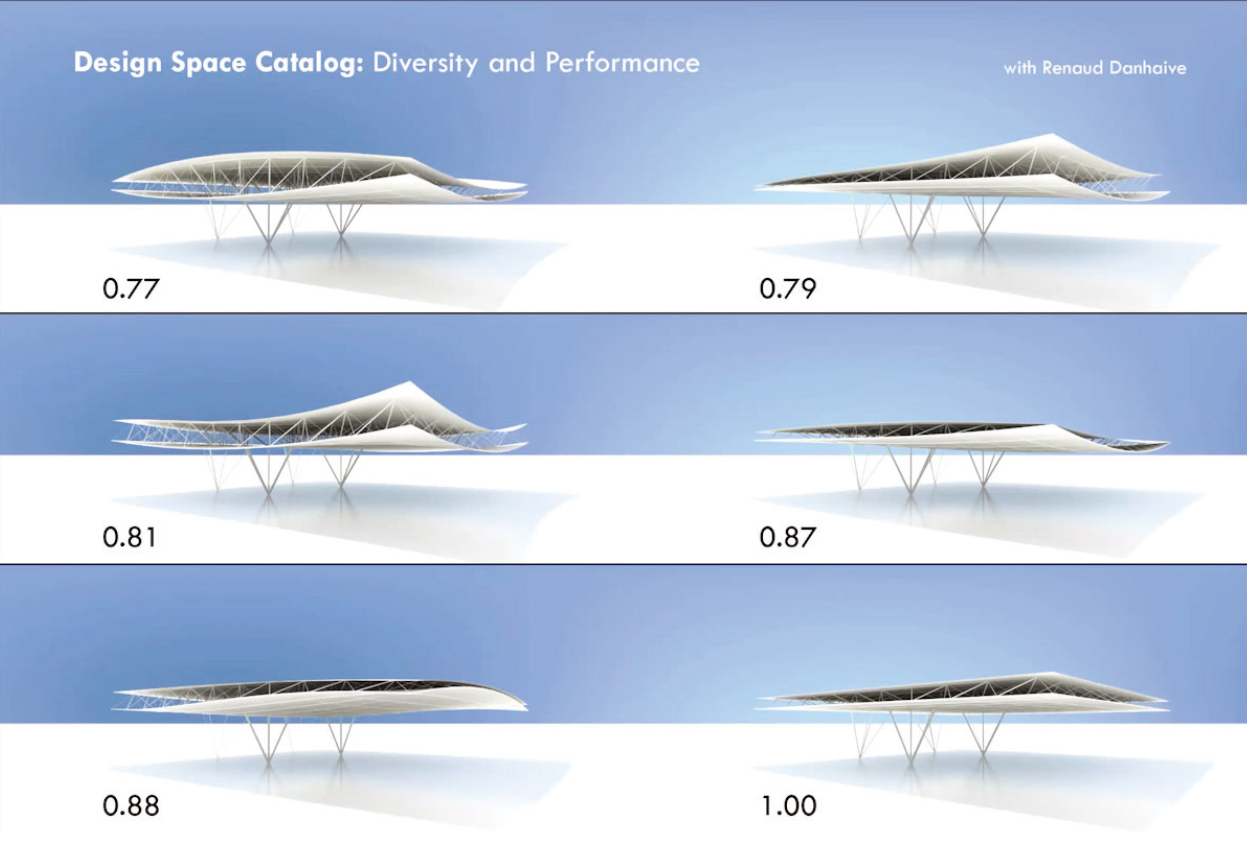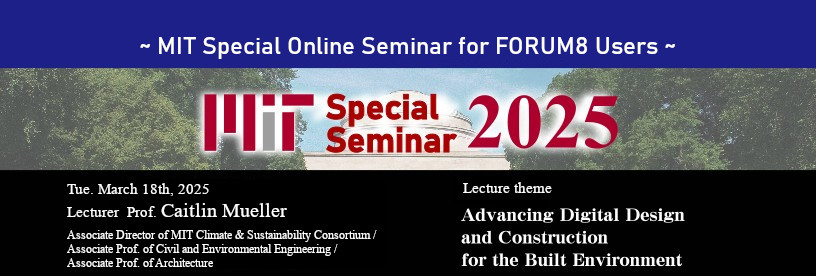|
FORUM8 participates in MIT ILP, an industry-academia collaboration programme of MIT (Massachusetts Institute of Technology), and we have held the "MIT Special Seminar" every year in March and September in cooperation with MIT ILP since 2021. To the 9th MIT Special Seminar, Prof. Caitlin Mueller was invited from Department of Civil and Environmental Engineering / Department of Architecture to deliver a lecture under the theme "Advancing Digital Design and Construction for the Built Environment".
Fusion of engineering and design
Prof. Caitlin Mueller researches across several fields such as architecture, structural engineering, computer science, etc., and is working on reducing architectural embodied carbon, which is emitted through manufacturing, construction and demolition of building materials. In this lecture, she talked about the importance of using engineering from the initial step of design process.
Traditionally, structural considerations have been pushed to the end of the design process, primarily as a form check. Prof. Mueller saw challenges in this process, and said there is a need to integrate structural engineering and creative design from the beginning.
"Design Space" expanded by calculation technology
One method introduced was the use of optimization tools, which are calculation-aided tools for deriving efficient shapes from a structural perspective, and which play a role in expanding design possibilities.
She points out that "rather than following the optimization results themselves, it is important to also look at the periphery of the optimal solution." This is because the diverse design proposals (=design spaces) presented by the tool allow us to discover new architectural possibilities that resonate with human sensibilities. Such design spaces will provide architects with new perspectives and creative inspiration, emphasized Prof. Mueller.
 |
| A variety of optimized design ideas are displayed in the design space. |
Multi-purpose optimization connecting several conditions
In recent years, there has been progress in "multi-objective optimization" techniques that consider multiple conditions simultaneously. For example, it is now possible to use calculations to derive optimal solutions that simultaneously satisfy different goals, such as reducing embodied carbon and improving structural performance.
This methodology also helps architects to make clearer and more effective decisions. Complex factors can be considered in an integrated manner from the early design stages, improving the quality of decision-making.
Using machine learning and generative AI
This process is supported by the use of machine learning and generative AI, such as surrogate modeling, which allows for real-time evaluation of the structural performance of design proposals. Furthermore, visualizing the results of multi-objective optimization using generative AI makes it easier to intuitively grasp complex options. In this way, new design hints can be obtained that would be difficult to find using human imagination alone.
Design possibility expanded together with AI
This presentation introduced an approach for humans and AI to work together to achieve sustainable architecture. By utilizing computational technology, various options can be visualized, taking into account factors such as structural performance and environmental impact. Architects can use their own judgment to select the meaning and value of each, which can sometimes lead to new ideas and design directions.
Prof. Mueller's lecture demonstrated that AI is bringing new perspectives and possibilities to the design selection process.
| 
